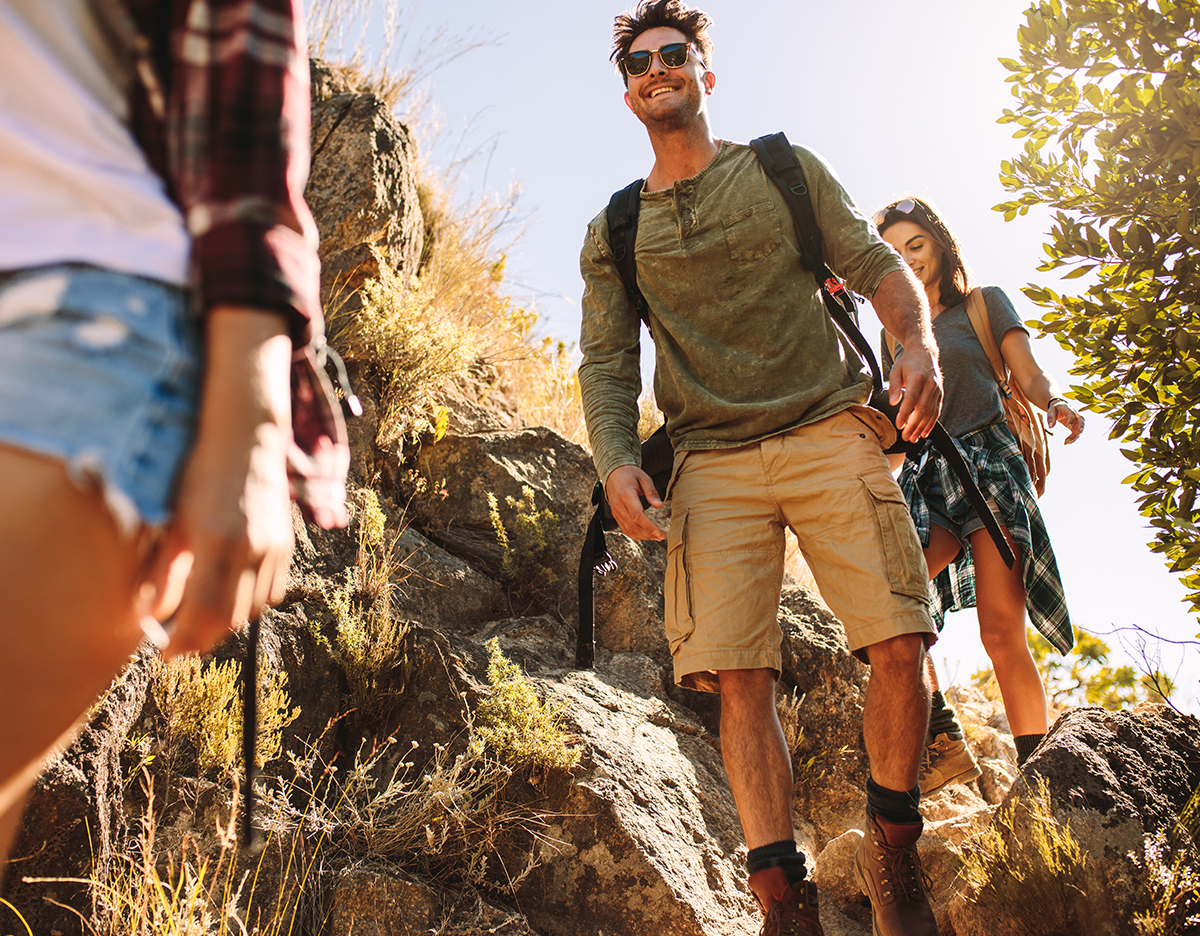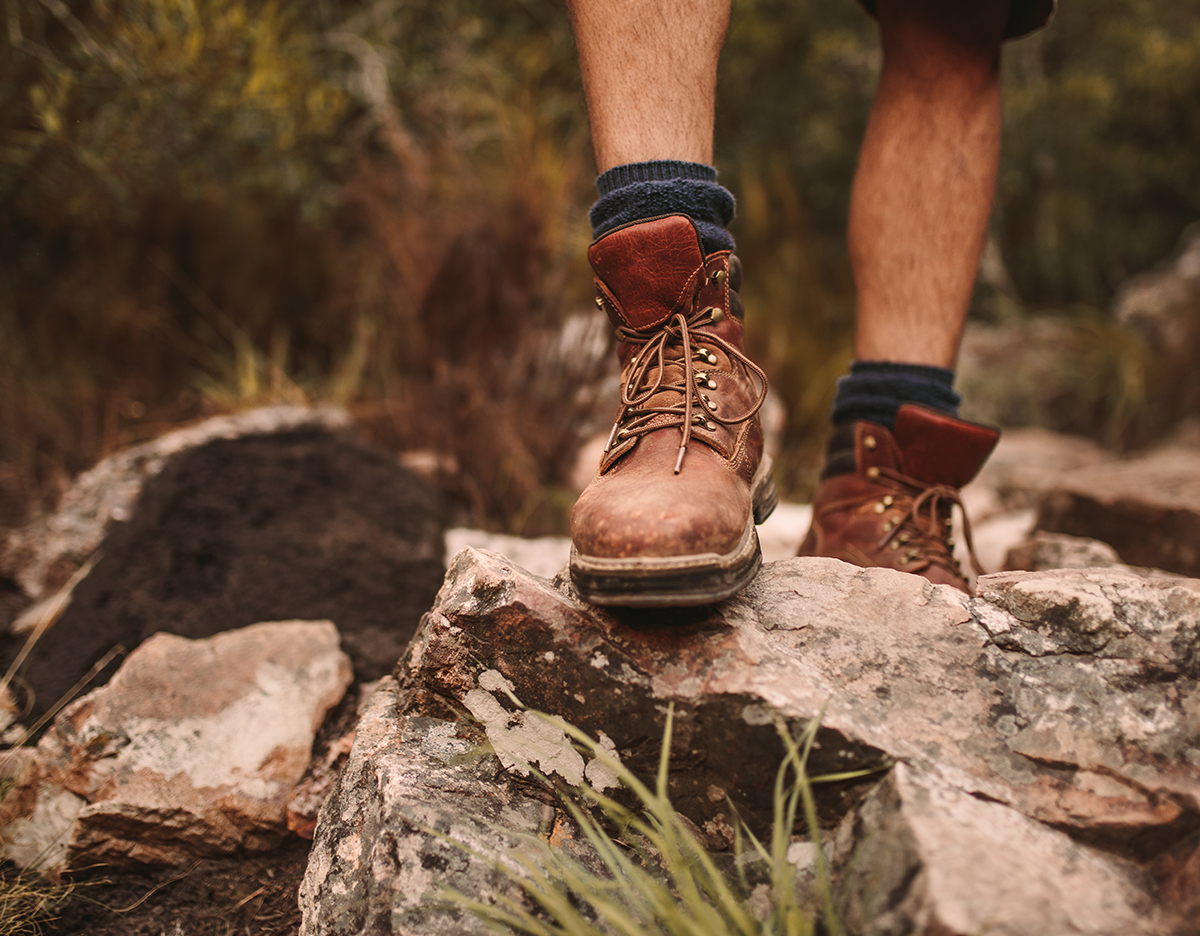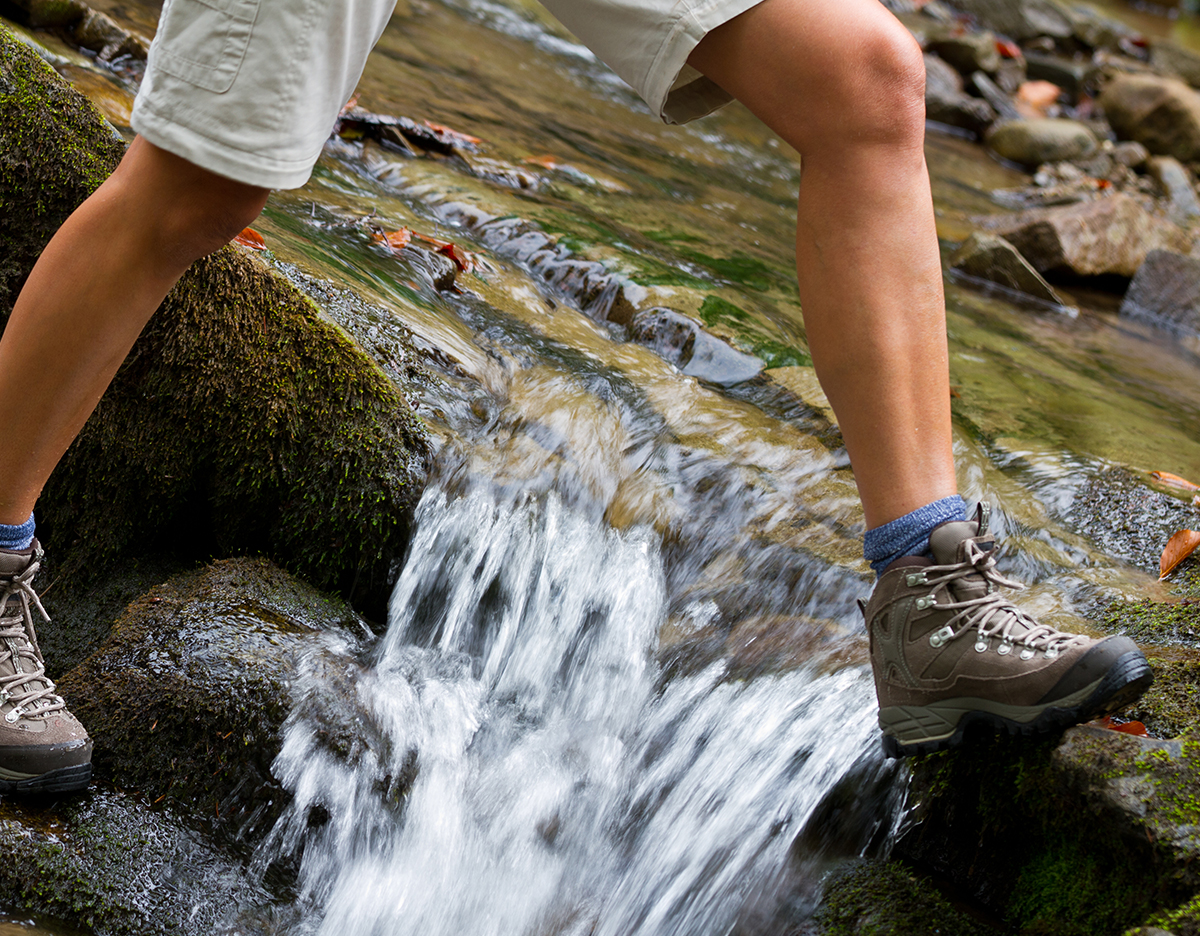Es ist zugänglich, unterhaltsam und eine großartige Übung - stellen Sie also sicher, dass Sie für das Wandern mit den richtigen Schuhen ausgestattet sind.
For freedom. To exercise. For a connection with nature. To stimulate creativity. For family time. For time to ourselves. For our mental health. For these and a multitude of other reasons, we’ve become a planet of walkers.
The trend has been exacerbated by the pandemic but even before Covid became the dominant feature in our daily realities, more and more people were turning to walking both for exercise and mental health benefits.

Hiking for long term health
Figures from Sport England released in April last year showed 20.3m people were walking for leisure, an increase of 1.2m on the previous 12 months. A further 15.3m were walking for travel, another increase of nearly 400,000 on the previous year. This trend continued through the pandemic as daily exercise remained one of the very few liberties available to many. In England, figures from Sport England show that on average 63% of people said they wanted to stay active for their mental health. It’s not just individuals who have discovered the benefits of walking, US families report nature walks and hikes as their favourite outdoor activity.
It's hoped that people are now firmly in the habit of walking and the humble ramble is finally having its moment in the sun. Financial experts Schroeders warn a rush to buy equipment doesn’t necessarily translate to a habit becoming a bona fide lifestyle change - which could be bad news for all those SUPs and camping stoves - but in the case of walking, it just might.
Choosing the right hiking boots
The beauty of walking is its accessibility. You don’t need to travel for a walk or have any special kit – barring a good pair of shoes. While yes, technically any old pair of trainers will do, once you’ve caught the walking bug, a good pair of supportive, well-fitted walking boots can help reduce the chance of injury, prevent blisters or other damage to the feet and make sure they stay comfy, healthy and pain-free during your hike.
Breathable and waterproof materials are also essential. Sweat and damp are the enemy of walkers, not only because they’re uncomfortable but also because boots or shoes that don’t allow air to circulate – such as wellington boots - can become a breeding ground for fungal infections.
If you’ve ever perused the shelves of an outdoor store or been online in search of walking boots, you’ll know the choice can be overwhelming.
‘Deciding what you intend to use the footwear for can help narrow down your selection,’ advises Glen Calloway, product development manager for Penland Brands which counts outdoor emporium Berghaus among its labels. ‘If you’re predominantly walking in parks, forests or in the countryside on well-made paths a pair of lower cut walking shoes or mid-cut boots might be the best option. If you’re planning on navigating more adventurous terrain, a more serious 3-4 season hiking boot would be better suited.’

Hiking boot fitting
It goes without saying that even the best-made boots in the world aren’t worth much if they don’t fit properly. Look for enough room for you to wiggle your toes around, because your feet will expand and swell whilst you’re walking. Make sure there’s no pinching across the toes or any pressure around the ankles. Footwear should offer a good level of support, enough cushioning underfoot for you to feel comfortable, and plenty of grip. Where possible, try boots on instore. Many retailers will offer fitting services.

Leather hiking boots
The final way to narrow down your choice is to look at the material used.
‘Leather boots are more durable and will usually last longer than their fabric equivalents,’ advises Calloway. ‘There are often less stitch seams in leather boots, reducing potential failure points, and they are easier to clean. They do require more regular treatment and care than fabric boots to keep them in good condition.’
Leather is naturally breathable and insulating, absorbs perspiration and moulds to the shape of the wearers’ foot, meaning a better fit is possible.
Leather is also a good choice for sustainability, as it’s both a recycled material as a by-product of the meat industry (animals are not raised to make leather) and easy to repair and recycle.
Repair, reuse recycle
‘Some walking boots can be re-soled to extend their life, and boots that are unwanted or beyond repair can be sent to specific charity organisations that will either re-sell or recycle them,’ Calloway says. ‘The sole units can be ground up and used in the surfaces for children’s playgrounds, for example.’
But some customers prefer to find other creative uses for their worn-out, well-loved boots. ‘We knew of one customer who was so attached to their favourite pair of leather walking boots they used them as a flowerpot in the garden once they’d reached the end of their useful life.’